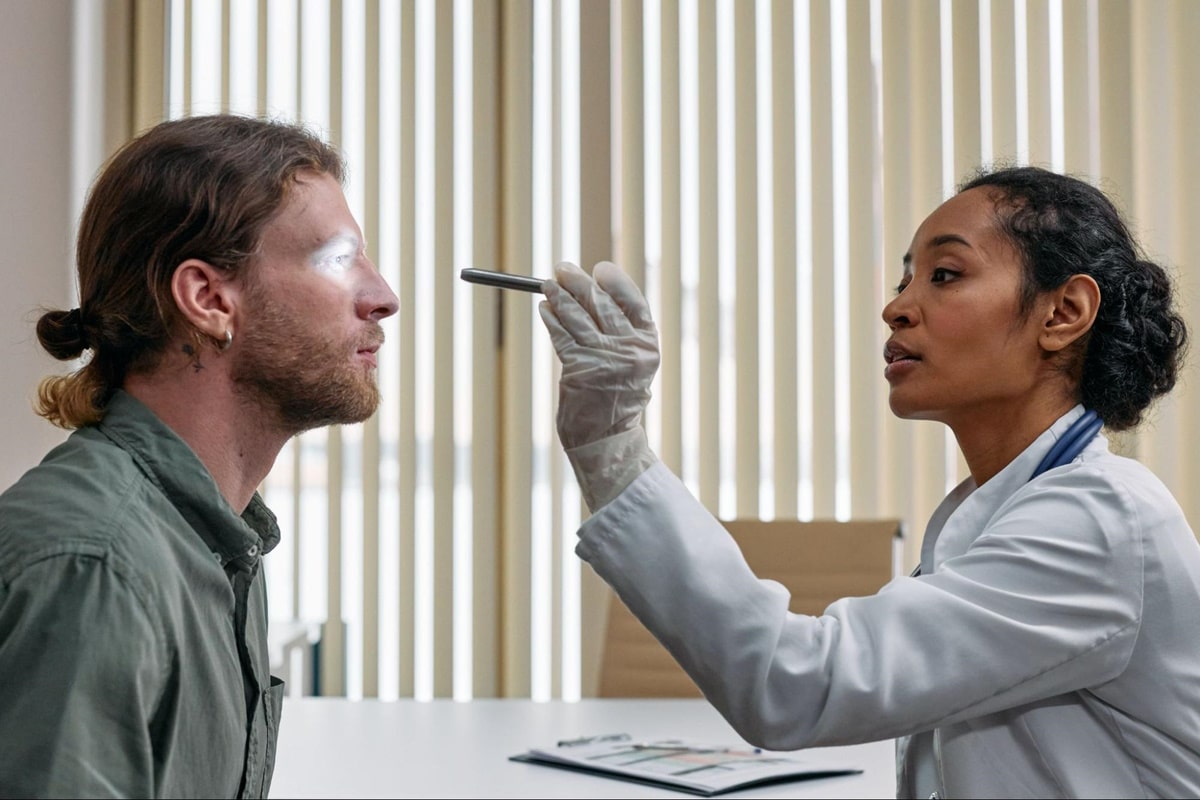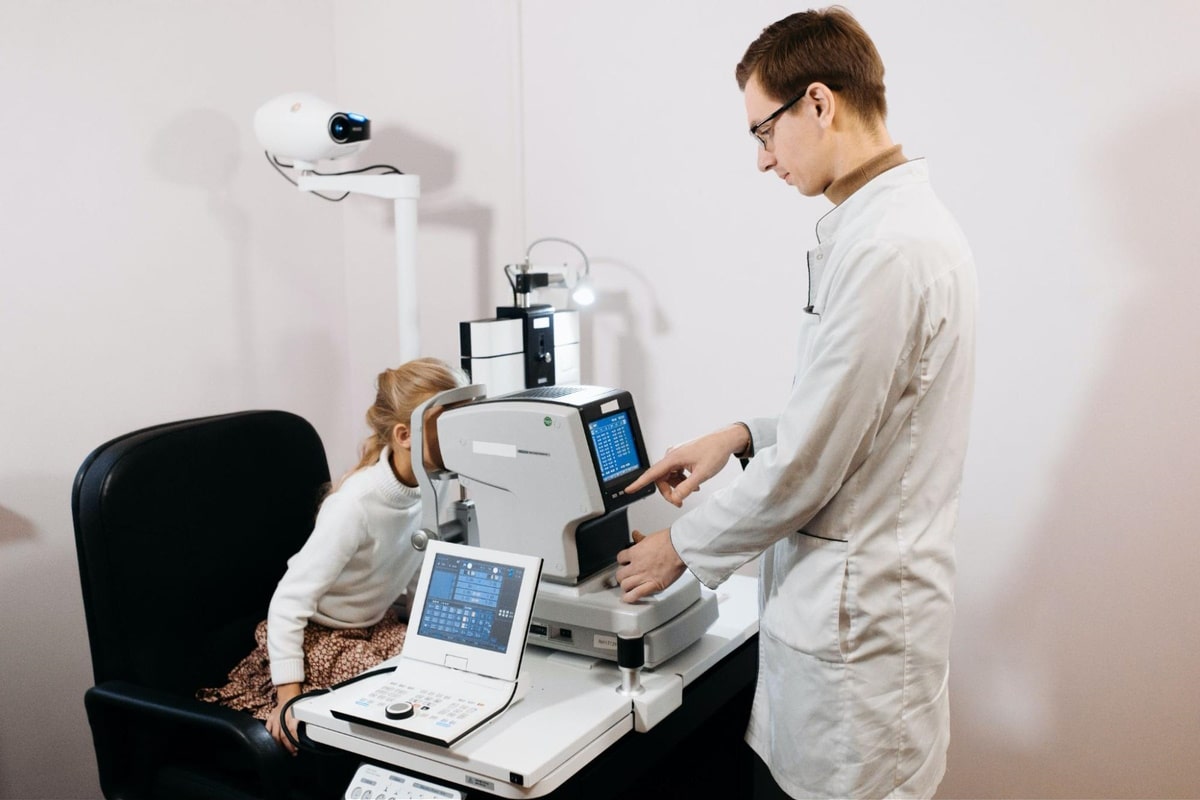Why Is the Air Puff Eye Test Important?
Have you ever heard of the air puff eye test?
This type of eye test is infamous, not only for its odd name but also for how dreadful it can be. While it’s completely painless, the air puff eye test can be uncomfortable for some people.
Imagine this: you’re sitting there, waiting for the test to be over. Suddenly, your optometrist grabs a tool resembling a pencil and shoots a “poof” of air into your eye.
So, what does this unusual procedure really do for our eyes? Let’s get into what it’s all about.
What is the air puff eye test?
The air puff eye test, known technically as non-contact tonometry, is usually conducted to diagnose glaucoma. At the very least, it can determine if you’re at high risk of developing glaucoma-related symptoms.
How does that work? Well, consider this: our eyes always have various fluids in them to keep them safe and healthy. Your eyes produce these fluids, then they get drained out. On and on the cycle goes.
However, there might come a time when these fluids get stuck. Suddenly, they have nowhere to go and they build up inside your eyes. That can lead to a lot of eye pressure.
Over time, high levels of eye pressure can damage your optic nerve, which is connected to your brain. When left ignored, this entire scenario can escalate into glaucoma.
More worrying still, the symptoms can easily go undetected. According to a recent study, only 30-50% [1] of glaucoma patients in the US are diagnosed properly. 50% of people [2] suffering from glaucoma don’t even know they have it.
How the air puff test is done
For skeptics and people with low pain tolerance, here’s some good news: the air puff test is completely painless. It’s not a complicated eye exam that takes hours and days. Rather, it’s super quick and convenient.
Your eye doctor can do the air puff test in two different ways.
1. Using a little puff of air
Your doctor will take a tonometer, which is a pencil-like device.
With this, they’ll blow a small puff of air into your eye while you look at a light. From this test, they can measure how much pressure you have in your eyeball.
2. Using a gentle tap on the eyeball
For this method, your doctor will put numbing eye drops in your eye. Then, they’ll take the tonometer and use it to gently touch the front surface of your eye. This can measure the pressure inside your eyes.
The range for normal eye pressure is 12-22 mmHg (“millimeters of Mercury”). If yours goes above that range, it’s likely that you have glaucoma.
However, results can also vary on a case-by-case basis. If you have high eye pressure but no damage to your optic nerve, you might be diagnosed with ocular hypertension instead.
Because of this, the air puff test isn’t completely accurate. Rather, it’s just one of many options you have. Doing a complete set of different eye tests can help pinpoint your exact diagnosis.
Other symptoms of glaucoma
Aside from a high level of eye pressure, here are other symptoms that may indicate glaucoma:
- Blurry vision
- Severe and persistent eye pain
- Red eyes
- Intense headaches
- Nausea and throwing up
- Seeing halos around lights
- Tenderness and swelling around the eyes
If you experience these symptoms for more than a few days, consult an eye doctor immediately.
Risk factors for glaucoma
Apart from stress and aging, genes can also be a risk factor for glaucoma.
Anyone can experience glaucoma symptoms, but you might be at higher risk if you:
- Have a family history of glaucoma
- Are aged over 40
- Have diabetes
- Get constant migraines
- Have a history of eye injuries or trauma
- Already have near- or farsightedness
- Are African, Hispanic, or Asian
- Can see that your corneas are thin in the middle of your eye
- Experience blood circulation issues
If any of these risk factors apply to you, consult your doctor and discuss the practical steps and lifestyle changes you need to take next.
Alternative tests for diagnosing glaucoma
As mentioned before, the air puff test is convenient, but it may not be sufficient to get an accurate diagnosis.
If you want to know for sure whether you have glaucoma, you’ll most likely have to go through several tests.
These are some of the alternatives your doctor may recommend.
Gonioscopy
Remember the fluid drainage we talked about earlier? Gonioscopy checks for that.
In the process, your eye doctor will examine the front of your eye through a special lens and a light. More specifically, they’ll look between your cornea and iris to check if your eye’s drainage angle is blocked.
Visual field test
For this one, the eye doctor will test how far your eye can see in any direction, without physically moving your head. As it detects any potential vision loss outside of your central visual field, it can detect glaucoma as the disease affects peripheral vision. The test also gauges how sensitive your vision is, and whether you have any potential blind spots.
Optic nerve assessment
As mentioned earlier, high levels of eye pressure can damage your optic nerve. As such, an optic nerve assessment may be needed to form an accurate diagnosis.
In such a test, your doctor will use a bright light and special lens to check for any glaucomatous structural damage at the back of the eye, specifically, in your optic nerve. They may also take a photo of the optic nerve for further examination.
Prevention is always better than cure
Eye exams shouldn’t be a once-in-a-blue-moon type of thing. Rather, it ought to be a routine check-up like what you do for the rest of your body.
For eye conditions like glaucoma, there’s no cure at all. The best thing to do is to prevent the problem before it develops by getting a complete eye exam, including the air puff test.
Don’t know how often you should get an eye exam? Read up on it here, and check out more articles on Mouqy to brush up on your eye health knowledge.
References
- “The majority of glaucoma cases remain undiagnosed in the US”, Clinical Trials Arena
- “Don’t Let Glaucoma Steal Your Sight!”, CDC

Written by:
Jamie Mendiola














